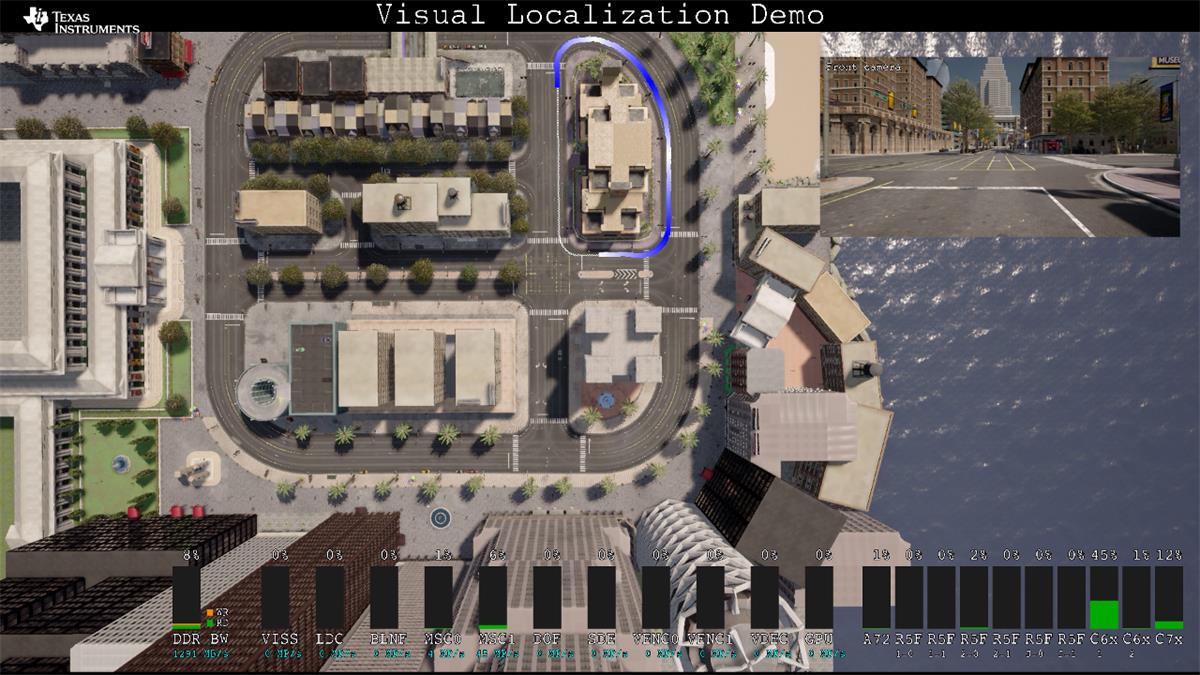SPRACX1A April 2021 – April 2021 TDA4VM , TDA4VM-Q1
4 Example Visual Localization Application
A visual localization application that is built on the subtasks described above is included with the SDK that accompanies the TDA4x family of devices. Since this application was designed to run on simulated data, as it allows for comparison with the ground truth, the data does not need to be processed using VPAC. The application instead consumes saved simulated image data. Detailed documentation of this application can be found here.
Figure 4-1 shows an example output from this application. Here, the computed and actual paths are overlaid on a bird-eye view of the scene. The blue markings here show the computed trajectory, and the white shows the ground truth. The utilizations of the different compute cores at this instance are shown on the bottom right corner. Detailed results can be found here.
 Figure 4-1 Example Output From Visual
Localization Application
Figure 4-1 Example Output From Visual
Localization Application